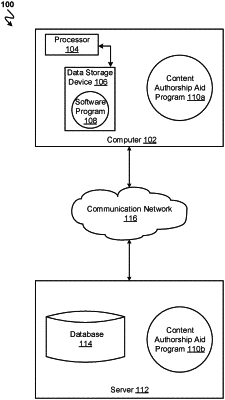| CPC G06F 16/9537 (2019.01) [G06F 16/9535 (2019.01); G06F 16/9538 (2019.01)] | 17 Claims |

|
1. A computer system for content authorship aid, the computer program product comprising:
one or more processors, one or more computer-readable memories, one or more computer-readable tangible storage media, and program instructions stored on at least one of the one or more computer-readable tangible storage media for execution by at least one of the one or more processors via at least one of the one or more computer-readable memories, wherein the computer system is capable of performing a method comprising:
detecting a pause of a user activity of a user exceeding a threshold amount of time;
based on the detection, querying based on one or more inputs associated with the user; and
based on the querying, presenting a recommendation including at least one piece of additional content from a corpus of additional content via calculating a multi-sensory region based on a monitored travel location and one or more of the five sense including sight, sound, smell, touch and taste and a maximum sense distance value for each sense associated with the user;
selecting at least one piece of additional content from the corpus of additional content based on the calculated multi-sensory region;
generating a data model based on the selected at least one piece of additional content; and
selecting a relevant piece of additional content from the generated data model based on determining a topic associated with the selected relevant piece of additional content matches the topic ascertained from the one or more inputs;
wherein presenting the recommendation includes presenting the selected relevant piece of additional content to the user.
|